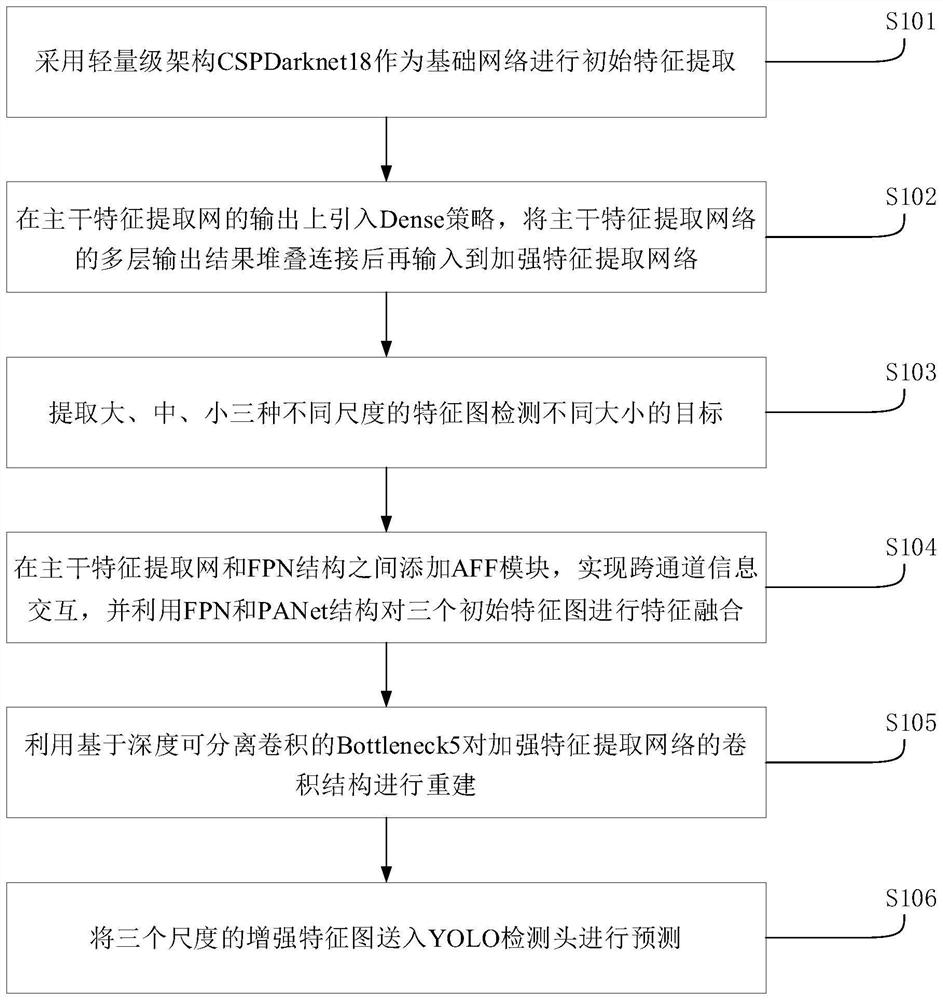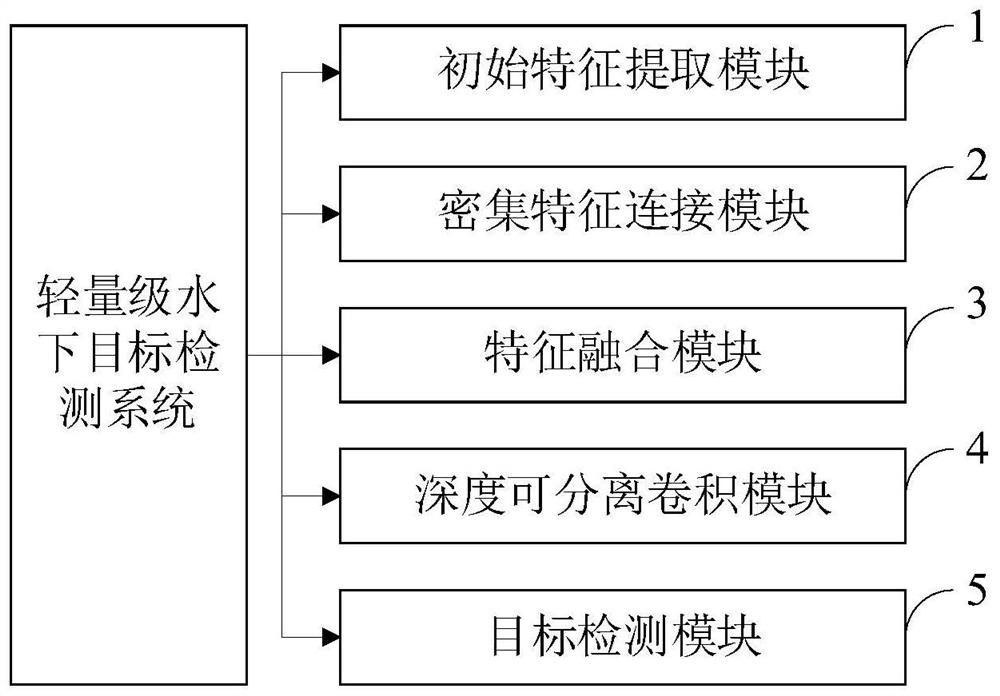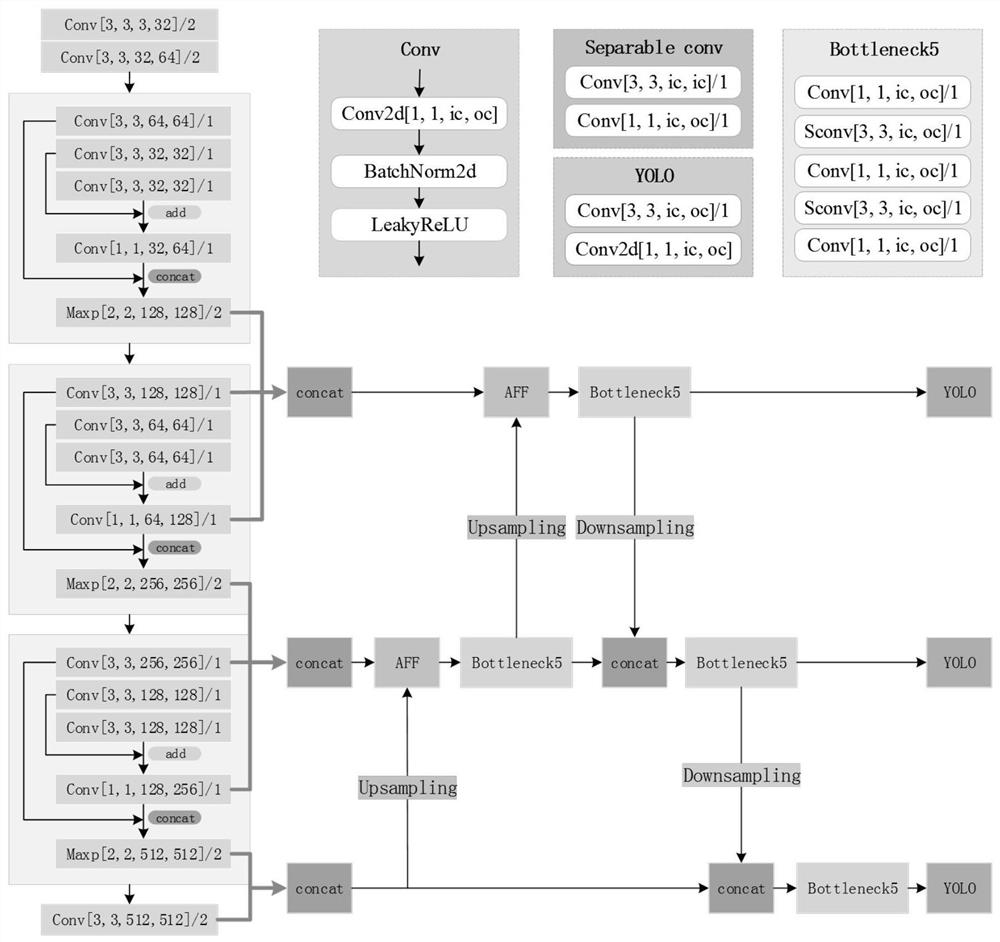Lightweight underwater target detection method, system, medium, equipment and terminal
A technology of underwater target and detection method, which is applied in the field of target detection, can solve problems such as lack of details, noise pollution, blurring, etc., and achieve the effect of improving recognition accuracy, reducing quantity, and improving accuracy
- Summary
- Abstract
- Description
- Claims
- Application Information
AI Technical Summary
Problems solved by technology
Method used
Image
Examples
Embodiment 1
[0083] The light-weight underwater target detection method based on dense feature fusion provided by the embodiment of the present invention includes the following steps:
[0084] Step 1: In order to realize the lightweight of the detection model, the present invention adopts the lightweight architecture CSPDarknet18 as the basic network, and uses it for initial feature extraction.
[0085] Step 2: In order to make the acquired features more substantial and diverse, the present invention introduces a Dense strategy on the output of the backbone feature extraction network, stacks and connects the multi-layer output results of the backbone feature extraction network, and then inputs them to the subsequent enhanced feature extraction network. to improve feature utilization.
[0086] Step 3: The semantic information of the small-scale feature map is poor, and the location information is strong. The location information of large-scale feature maps is strong, but the semantic infor...
PUM
 Login to View More
Login to View More Abstract
Description
Claims
Application Information
 Login to View More
Login to View More - R&D
- Intellectual Property
- Life Sciences
- Materials
- Tech Scout
- Unparalleled Data Quality
- Higher Quality Content
- 60% Fewer Hallucinations
Browse by: Latest US Patents, China's latest patents, Technical Efficacy Thesaurus, Application Domain, Technology Topic, Popular Technical Reports.
© 2025 PatSnap. All rights reserved.Legal|Privacy policy|Modern Slavery Act Transparency Statement|Sitemap|About US| Contact US: help@patsnap.com



